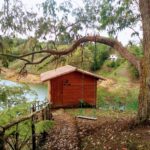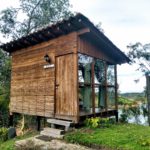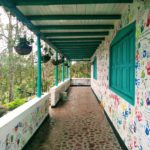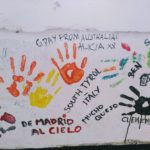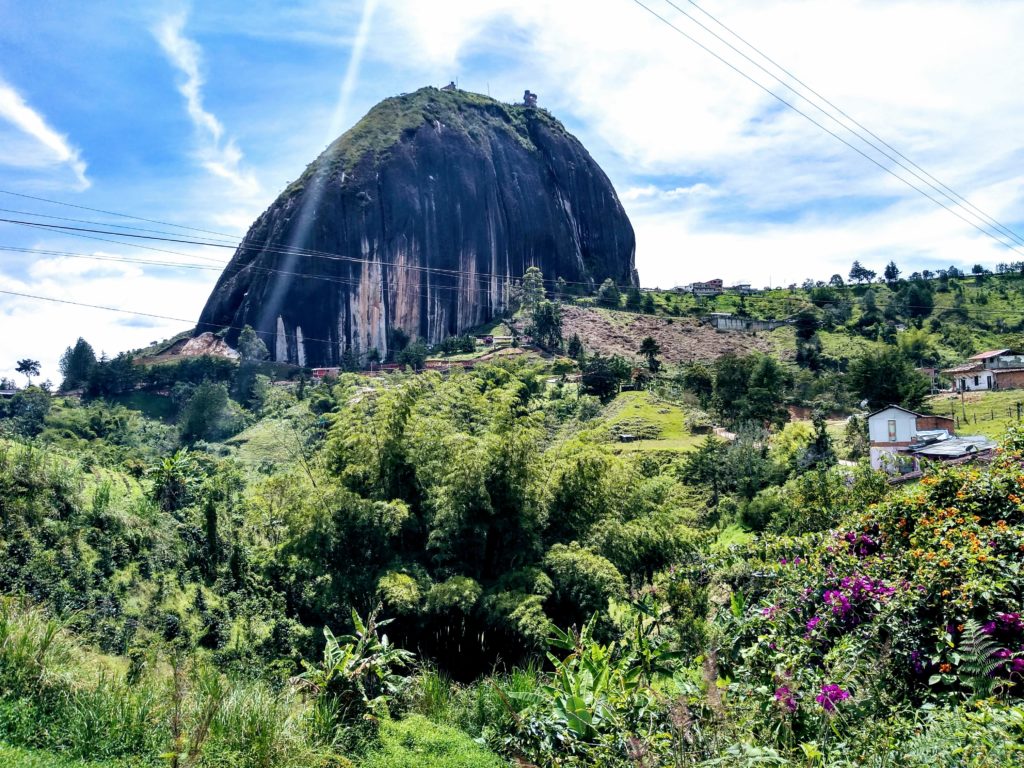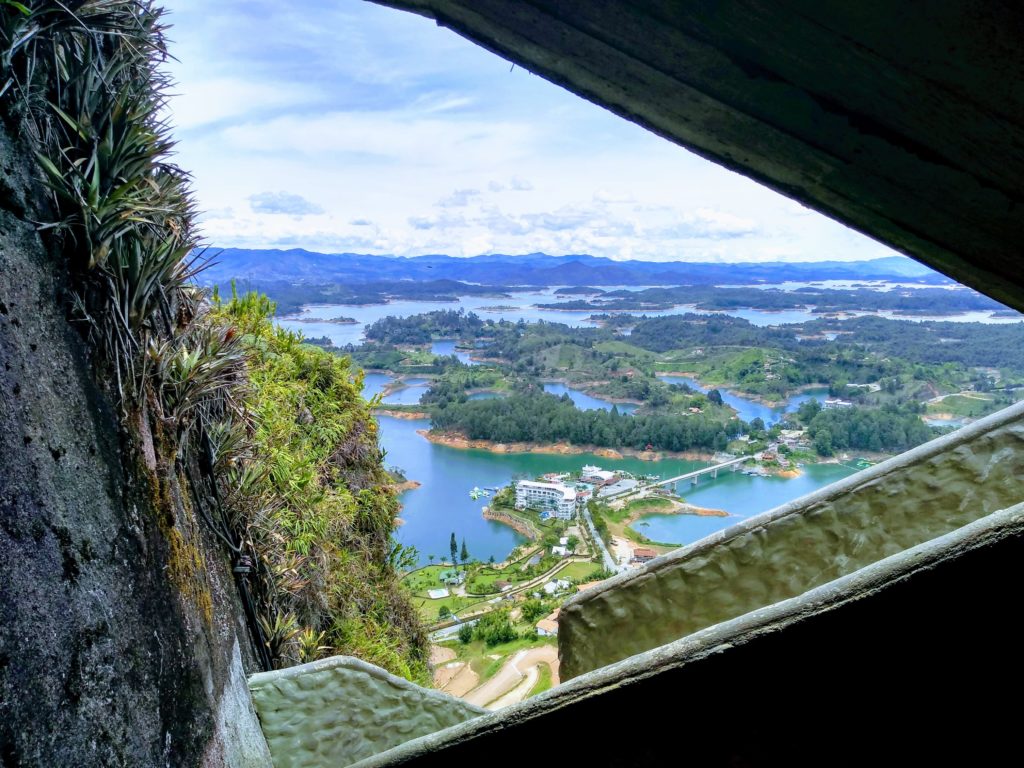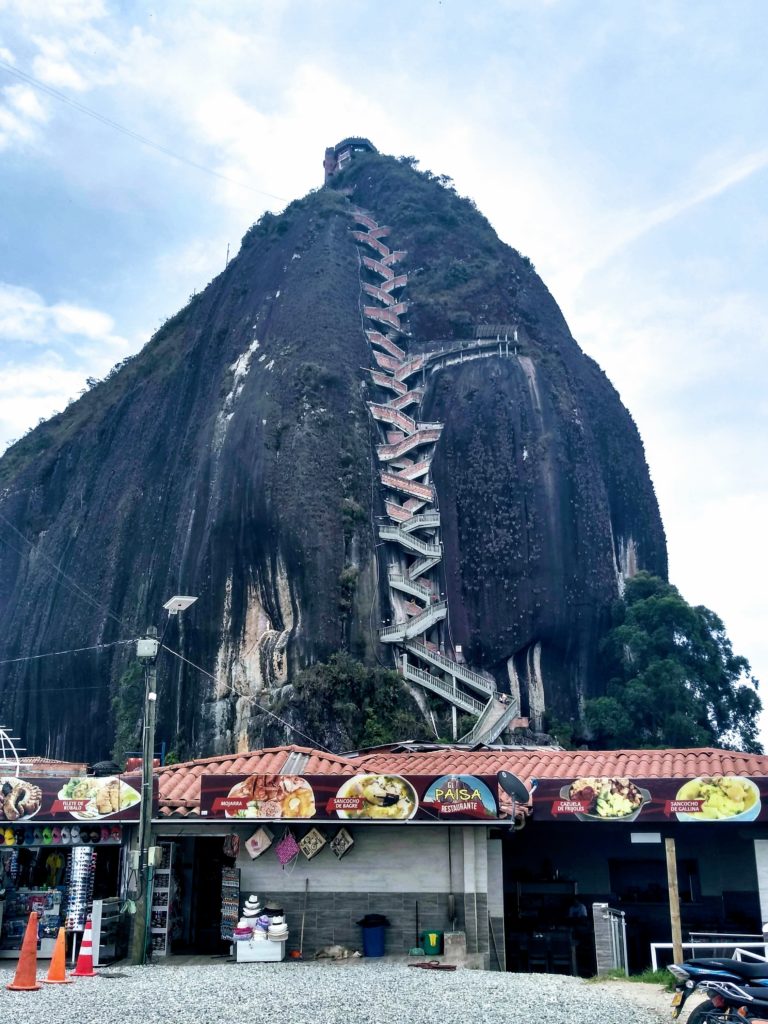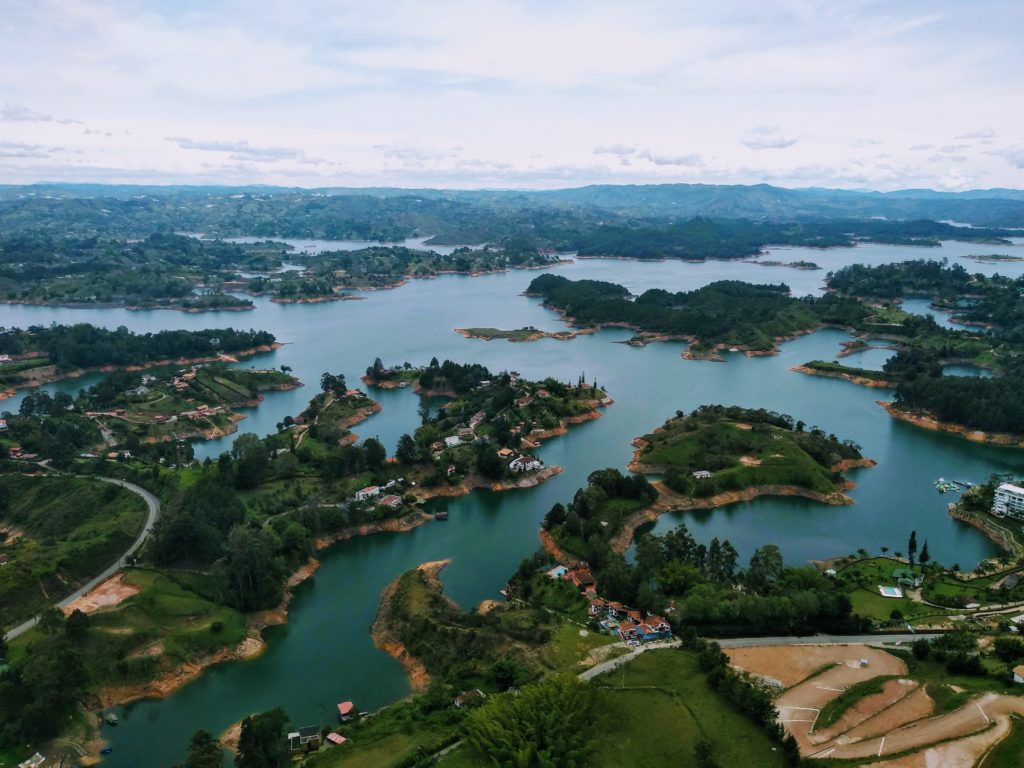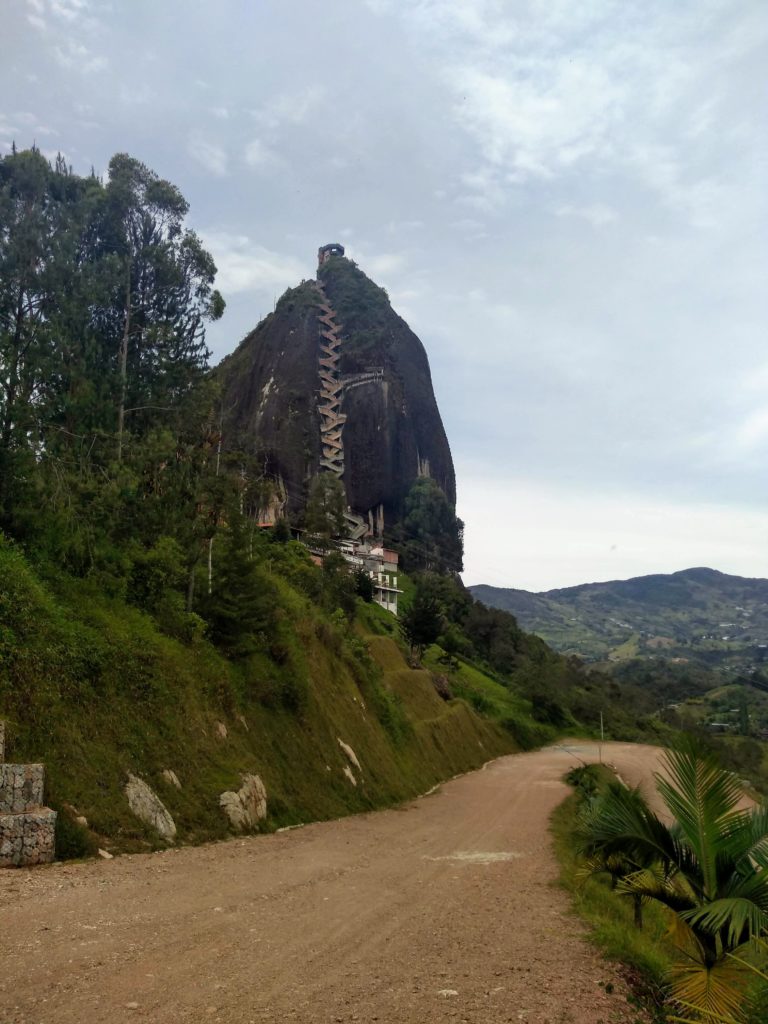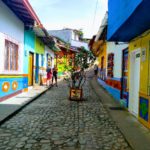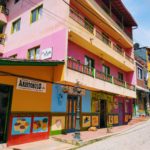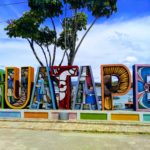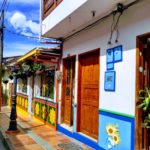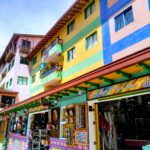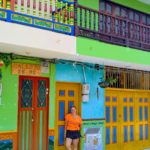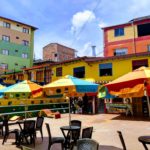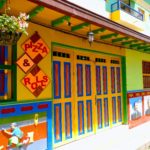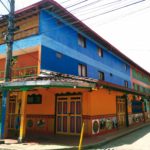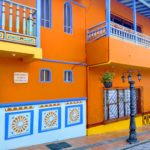My Weekend Colombian Escape to El Peñol and Guatape
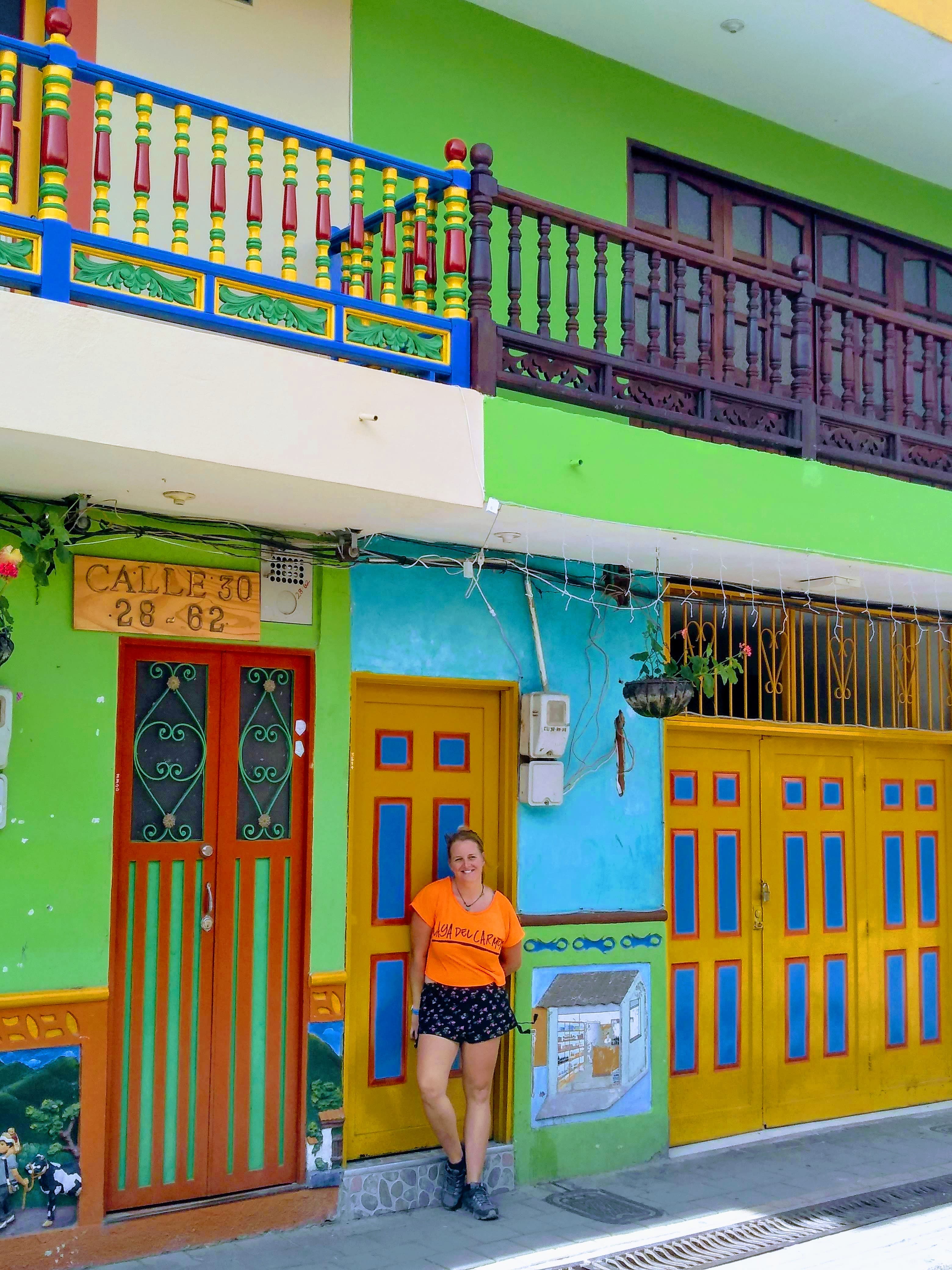
If you spend time in Medellin, you won’t leave before the locals suggest that you visit the picturesque town of Guatape and the huge rock of El Peñol. It’s possible to take a day tour with one of the operators from Medellin, or even take yourself just for the day and head back to the city in the afternoon. But if you go to the trouble of heading out there on the hour-and-a-half bus trip, you may as well immerse yourself in nature and colourful architecture for a few days as a kind of ‘reset’ for your weary traveller’s body. As the old English expression goes, ‘In for a penny, in for a pound!’
After a few days in the city, I was ready for a weekend escape. Additionally, after my Medellin City Transformation Tour a couple of days prior, I didn’t want to spend any more money on a tour where I would be stuck with other foreigners. I preferred to go it alone and figure it out one hour at a time – in true backpacker style. I packed my day pack with a couple of days of supplies, left my larger backpack in my hostel and found my way to the city centre bus station. Guatape is well-known for a large rock formation called La Piedra (the stone) del Peñol, and you can either stay in the town of Guatape and take a short bus ride to the rock or if you prefer a few days of quiet zen for yourself or a romantic getaway, I recommend staying in El Peñol itself. I wrestled with which hostel would be appropriate for me; either a party hostel to socialise and make friends to perhaps travel with, or a quiet getaway to force myself to be more comfortable with being alone, catch up on my reading and be present with nature. I chose option B. After arriving in the central Square at Guatape, I decided to try what is probably the most famous dish in Colombia, the pride of the state of Antioquia, the Bandeja Paisa (the Medellin Platter). It heaps red beans, rice, avocado, plantains, fried pork belly, blood sausage, and arepas. It’s enough to feed two people and keep you full for the whole day, so come on an empty stomach!

I crawled through the back doors of a tiny jeep that served as public transport in these parts and two German girls with humongous backpacks joined, throwing each other sheepish (self-conscious, ashamed) glances as the driver threw their oversized luggage onto the roof racks. The jeep made its way out of town, and after half an hour on a dirt road weaving through the green fields of Antioquia, it stopped halfway down a hill, backed up and stopped. The driver flung open the doors and spoke to us in rapid marble-in-the-mouth-style Spanish. The German girls looked to me in desperation, and I thanked myself more than ever before for becoming truly fluent in Spanish before travelling. Loosely translated, the road had been blocked and we had to walk the rest of the way. As I watched those poor girls walk down the grassy hills through barbed-wire fences with their backpacks piled higher than their heads, I secretly congratulated myself for being a ‘well-travelled backpacker’ and my foresightedness to pack only a simple day pack for the weekend.
- Walking through the green Antioquian fields to arrive at the hostel.
- No road here! Get there on foot!
- El Peñol – the perfect weekend escape from the hustle and bustle of Medellin city.
A Hilltop Escape: BACOA Hostel
I’d wanted a hostel that was ‘off the beaten track’ (isolated) to escape and switch off from reality…well, I think it doesn’t get more out of the way than traipsing through coffee fields and rocking up (Aussie slang meaning ‘arrive’) to your hostel on foot covered in mud.
Bacoa is a family-run hostel with the eco-friendly traveller in mind. It’s situated on the edge of one of the largest lakes in the country, created by the construction of a hydroelectric dam that provides 30% of the electricity supply of Colombia. But out here, one doesn’t think about the rest of Colombia, nor the rest of the world. The peace and isolation I felt as I wandered from my little dorm cabin out to the edge of the lake were unmatched anywhere on my travels thus far. Bacoa’s ethos is about combining five essential elements whilst living with the land and the natural resources provided by the earth.
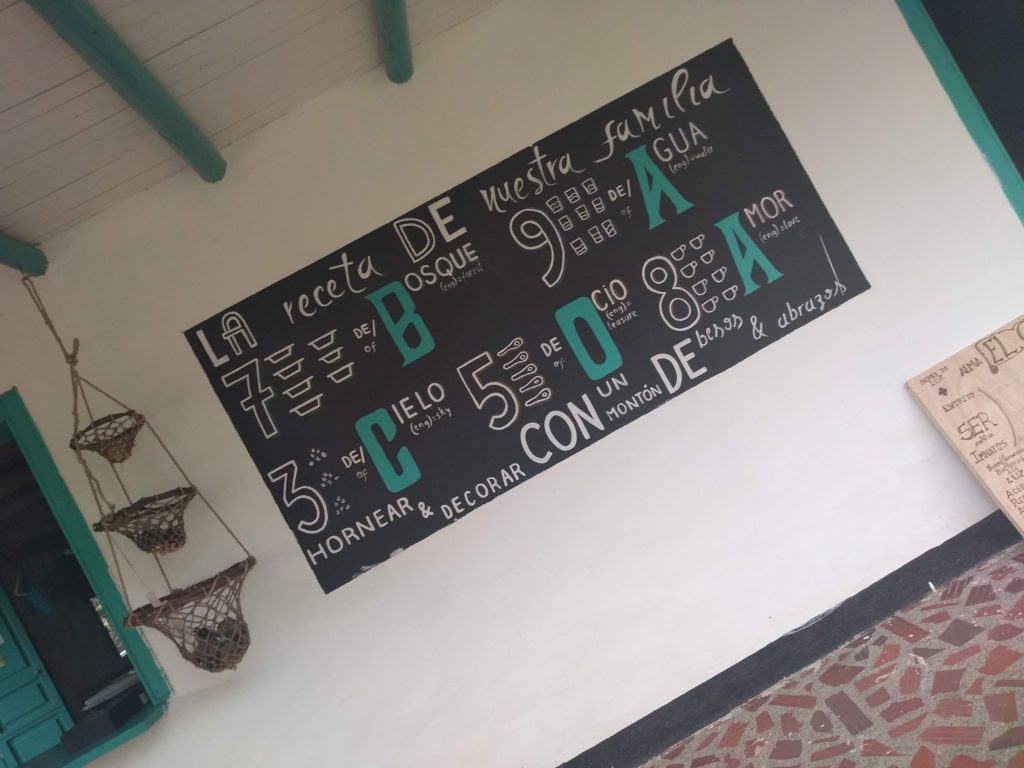
I couldn’t imagine a more secluded place for a romantic weekend getaway in the hostel’s individual secluded cabins by the water, each one representing each of the five elements:
B = Bosque (Woods)
A = Agua (Water)
C = Cielo (Sky)
O = Ocio (Free time)
A = Amor (Love)
It surprised me, however, that I was perfectly happy to be there alone, feeling fortunate to have the opportunity to be discovering places like this on the other side of the world. One of my goals before starting my trip had been to learn to enjoy being alone…perhaps I was maturing.
https://www.facebook.com/376096006096345/videos/194166545602303
I found a hammock underneath the deck of the bar area and pulled out my kindle to read the book I’d had most recommended to me about the history of exploitation in the area – The Open Veins of Latin America. I couldn’t get through more than a few pages without getting sad and angry. Two years on, I still haven’t finished.
- Each individual cabin is named after one of Bacoa’s elements.
- The ultimate weekend getaway cabin
- Reading about the oppressive history of Latin America in my hostel hammock.
- The handprints of all those who passed through before me.
- Adding my handprint to be part of Bacoa’s history.
The Rock of El Peñol
That was enough isolation and silence for me – after all, I’m an extrovert whose calling to make human connections! Time to have an adventure! I checked out a day early and headed back in the shoddy jeep and bus to the enormous rock that dominates the landscape and is visible from basically everywhere across the region – La Piedra del Peñol, the Rock of El Peñol.
Well, that’s what I’d seen it as, but in my research, I started to get confused because I began to also see it called El Peñon de Guatape. Turns out, there’s a history behind this…a history that even explains the weird ‘GI’ lettering smattered on one side of the rock. The towns of Guatape and El Peñol bickered back and forth over the ownership of the landmark, and therefore where the tourist dollars go. Eventually, the townsfolk of Guatape took their fingers out and climbed up the side and started to brand the rock with their town name GUATAPE. That went down like a lead balloon (it was an unpopular move, to say the least), and the painters didn’t even get halfway through the U.
This colossal formation had a religious significance to the indigenous Tahami people of the Antioquia region, and some guys who’d obviously drunk too much aguardiente decided it’d be a great idea to scale the thing in 1954.
There are now 740 steps to conquer, with yellow numbers written every so often to remind you of how much more dying you have to do before reaching the summit. I realised another advantage of being alone. I had no one to rush me, no one to compare my speed with, so my ego didn’t pay a visit and put me into danger by running up the steps or not stopping for breaks and consequently giving myself a heart attack. I would stop every few flights and take a picture, I even encouraged one girl who I heard falling behind her group to stop and smell the roses, or in this case take in the view, which was still beautiful even from halfway up.
“Bugger anyone else who goes on without you!” I said.
- The backside of the rock, proving that it’s impossible to get lost here.
- Even the view halfway up taking a rest on the stairwell is spectacular.
- Yes, they are stairs. Hope you brought your good walking shoes.
- The man-made canals from the damn are beautiful from the top of the Rock.
- Arriving from the bus stop for the big climb.
- A breathtaking view….literally…I couldn’t breathe, man.
For anyone who has the capacity to climb stairs, you can’t visit Guatape or surrounding areas without giving it a go. It’s a good cardio and leg workout, but it’s a simple and safe pathway. Take your time, and the view is more than worth it. Although I was so sweaty and knackered (Aussie slang for ‘exhausted’) when I finally reached the top that my photo was hardly instagrammable. I can never understand how girls get those beautiful photos with full makeup, floral dresses and strappy sandals…I looked like I’d rolled straight off the back of the dodgy jeep I came in on.
As often happens with any small touristy town, I ran into the German girls from my hostel, and we descended together, grabbed a local artisanal ice cream and headed towards the town of Guatape. An hour and a half later, we found ourselves wandering past local houses with the Rock still very much in sight. We admitted to ourselves that we’d taken the wrong turn and bargained with a local for a cab ride into Guatape.
Colourful Colonial Guatape
As I walked through the cobbled streets of Guatape town, I felt like I’d stepped into a painting. Vibrant colours jumped out at me from all directions. Houses, shops, fountains and laneways wound through the town, mixing the Spanish-colonial architecture style with the vibrance and joy of the Colombian spirit.
I rented a kayak for the afternoon and ambled around the huge lake, having heard that if you row for a few more hours, you can reach one of Pablo Escobar’s lakeside mansions, where he was on house-arrest before later escaping (yes escaping his OWN house, where he was allowed to be on HOUSE ARREST instead of PRISON. Anyway, I digress, it’s a faux pas for gringos to speak of this character.
I had fallen in love with the peacefulness of this little town, but I know myself – this tranquillity would only occupy me for a week before I’d be missing the action of the city. After one-too-many wines at my hostel with the bar staff, I retired to bed, rose the next day and headed back through the Antioquian mountains (hello, Andes!) to Medellin to collect the rest of my backpack and get ready to head onto my next destination, Salento.
Support my blog: subscribe via email
It takes a long time to plan, write and design my blogs. I love writing, and this is something I do totally for free for the love of sharing with people about my life and adventures, for those who don’t have the opportunity to travel for themselves.So if you enjoy my writing, I ask you to please subscribe to my blog using the form on the side of this article.
Leave a comment below with your thoughts on the article, or what you would like me to write about.
Follow me on Instagram: http://www.instagram.com/wonderswithalicia





